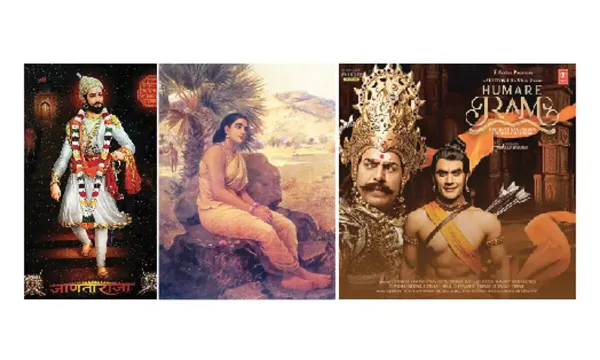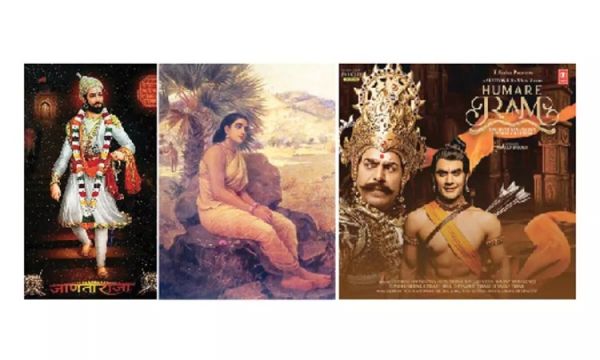
A large portion of modern society has forgotten the rich history of theater due to its immersion in new communication technologies. While traditional theater, an age-old art form, is having trouble establishing itself, today’s youth often recognizes only skits, television plays, and brief online series. One of the first forms of storytelling in human history, theater combines performance, music, and emotion to evoke strong feelings in viewers. Plays like Agatha Christie’s “The Mousetrap” have gained international recognition. The longest-running play is “The Mousetrap,” which debuted in 1952 at the Ambassadors Theatre in London. With ticket prices ranging from £25 to £100, it has subsequently relocated to St. Martin’s Theatre and continues to draw crowds from all over the globe.

Indian theater, on the other hand, has not maintained the same degree of ongoing prominence in spite of its lengthy history and unmatched cultural richness. The popularity of television, movies, and over-the-top (OTT) platforms has caused many of its classic pieces to drift into oblivion.
An Overview of History
The origins of Indian theater may be found thousands of years ago during the Vedic era. Written by Bharata between 200 BCE and 200 CE, Natyashastra is the basic work of Indian dramaturgy. It describes the fundamentals of acting, stagecraft, and performance. Traditional performances such as “Ramleela” and “Krishna Leela” demonstrate how the theater was an integral component of life and ceremonies in ancient India.
Classical Sanskrit tragedies like Kalidasa’s Shakuntala, Shudraka’s “Mricchakatika” (The Little Clay Cart), and Bhavabhuti’s “Uttara Ramacharita” demonstrated both lyrical brilliance and deep intellectual understanding. Regional theater styles such as “Yakshagana” in Karnataka, “Kathakali” in Kerala, “Jatra” in Bengal, and “Tamasha” in Maharashtra were essential to local societies throughout the Middle Ages. These creative forms were very popular because they blended improvisation, music, and folklore.
Modern Indian theater, inspired by Western dramaturgy, was introduced during the colonial era. Theatre was employed by pioneering writers like as Rabindranath Tagore, Vijay Tendulkar, and Girish Chandra Ghosh to expose societal injustices and criticize colonialism. In the 1940s, organizations such as the Indian People’s Theatre Association (IPTA) used theater as a vehicle for political and social awakening.
Indian Theater’s Forgotten Greats
Even while Indian plays continue to be essential components of creative and cultural expression, many of its classics have been overlooked throughout time.
Despite its legendary position, Kalidasa’s Shakuntala, which has received worldwide acclaim, notably from Goethe, is now hardly ever performed.
Dharmavir Bharati’s contemporary Hindi drama Andha Yug examines the political and moral decline after the Mahabharata battle.
Babasaheb Purandare’s famous Marathi drama Janata Raja tells the story of Chhatrapati Shivaji Maharaj. It has been played widely in India and elsewhere with lavish sets, costumes, and even live animals, inspiring pride in India’s rich cultural legacy.
Vijay Tendulkar’s Marathi drama Ghashiram Kotwal explores authoritarianism and power relations via historical backgrounds.
These classics are seldom seen on modern stages due to the popularity of more approachable entertainment, despite their historical and cultural value. Even more at risk are rural and local plays in isolated settlements, which sometimes vanish without any records or acknowledgment.
The Creative Economy and Theater
The creative economy depends heavily on theater, which supports jobs, cultural tourism, and the conservation of intangible cultural assets. India’s economic potential is yet untapped, nevertheless. Because theater tickets are usually priced between ₹200 and ₹1,000, shows are accessible but income creation is constrained. Expensive production costs—which include lighting, sets, costumes, and actor salaries—are more than revenue, and government and corporate funding are still erratic.
Despite these obstacles, there are a ton of potential for theater to become part of the creative economy. The potential of large-scale productions is shown by recent triumphs like Gaurav Bhardwaj’s “Humare Ram,” a dramatic adaptation of the “Ramayana.” With 120 sold-out performances in ten locations, ticket prices between ₹800 and ₹15,000, and cutting-edge live visual effects, “Humare Ram” proved that theater, when done well, can draw in contemporary audiences and bring in a sizable sum of money.
India’s Theatre Economy
In India, low ticket prices, little sponsorship, and erratic government assistance hinder the theater industry’s capacity to make a profit. Indian theaters usually charge between ₹200 and ₹1,000 for tickets, which makes them more accessible but limits their earnings. Scripts, sets, lighting, costumes, and actor wages are just a few of the high production expenses that sometimes outweigh profits.
Theaters have a harder time luring corporate sponsorships than movie theaters or over-the-top platforms. The absence of government programs to support theater further hinders its expansion. Notwithstanding these obstacles, theater boosts local economies by employing performers, technicians, and venue personnel in addition to assisting auxiliary sectors like advertising and catering.
The theater’s declining economic importance is shown by the fact that its proportion of India’s ₹2.6 trillion media and entertainment sector is still less than 1%.
Using the Creative Economy to Revive Indian Theater
Indian theater needs strategic interventions in order to maintain its position in contemporary culture and make a significant contribution to the creative economy:
1. Digital Integration: Websites that broadcast or record theatrical performances may increase accessibility and expose the art form to a younger audience. Working together with OTT platforms may provide a hybrid approach to moviegoing.
2. Corporate Sponsorship: To guarantee the financial viability of plays, businesses might include theater sponsorship into their Corporate Social Responsibility (CSR) programs.
3. Youth Outreach: To develop students’ enthusiasm and discover fresh talent, schools and universities should include theater workshops and performances in their curricula.
4. Modernizing Regional Forms: While maintaining cultural authenticity, modernizing traditional theater forms with modern stories and technology may draw in metropolitan audiences.
5. Cross-Media Collaborations: Movies like “Singham Again,” which included theatrical components from the “Ramayana,” are prime examples of how traditional theater and contemporary media may be used to provide inventive narrative experiences.
6. Cultural Tourism: By hosting shows that highlight India’s intangible history for both local and foreign audiences, theater may play a significant part in cultural tourism.
Impact on the Economy and Culture
India’s creative economy may benefit greatly from a revived theater sector. In addition to helping supporting sectors like printing, advertising, and catering, it generates employment for performers, directors, technicians, and venue employees. Additionally, it gives budding artists a stage on which to display their abilities and create long-term incomes.
The promise of theater goes beyond economy; it promotes creative creativity, community involvement, and cultural preservation. Indian theater can restore its international reputation, draw a wide range of viewers, and add to the nation’s creative and cultural riches by blending tradition and modernity.